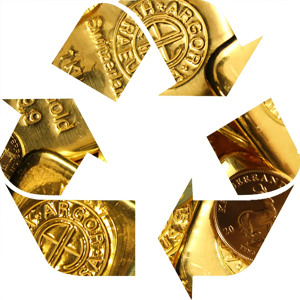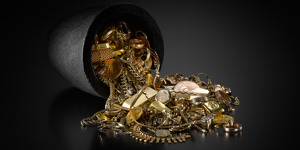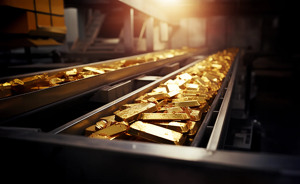Tavex uses cookies to ensure website functionality and improve your user experience. Collecting data from cookies helps us provide the best experience for you, keeps your account secure and allows us to personalise advert content. You can find out more in our cookie policy.
Please select what cookies you allow us to use
Cookies are small files of letters and digits downloaded and saved on your computer or another device (for instance, a mobile phone, a tablet) and saved in your browser while you visit a website. They can be used to track the pages you visit on the website, save the information you enter or remember your preferences such as language settings as long as you’re browsing the website.
| Cookie name | Cookie description | Cookie duration |
|---|---|---|
| tavex_cookie_consent | Stores cookie consent options selected | 60 weeks |
| tavex_customer | Tavex customer ID | 30 days |
| wp-wpml_current_language | Stores selected language | 1 day |
| AWSALB | AWS ALB sticky session cookie | 6 days |
| AWSALBCORS | AWS ALB sticky session cookie | 6 days |
| NO_CACHE | Used to disable page caching | 1 day |
| PHPSESSID | Identifier for PHP session | Session |
| latest_news | Helps to keep notifications relevant by storing the latest news shown | 29 days |
| latest_news_flash | Helps to keep notifications relevant by storing the latest news shown | 29 days |
| tavex_recently_viewed_products | List of recently viewed products | 1 day |
| tavex_compare_amount | Number of items in product comparison view | 1 day |
| Cookie name | Cookie description | Cookie duration |
|---|---|---|
| chart-widget-tab-*-*-* | Remembers last chart options (i.e currency, time period, etc) | 29 days |
| archive_layout | Stores selected product layout on category pages | 1 day |
| Cookie name | Cookie description | Cookie duration |
|---|---|---|
| cartstack.com-* | Used for tracking abandoned shopping carts | 1 year |
| _omappvp | Used by OptinMonster for determining new vs. returning visitors. Expires in 11 years | 11 years |
| _omappvs | Used by OptinMonster for determining when a new visitor becomes a returning visitor | Session |
| om* | Used by OptinMonster to track interactions with campaigns | Persistent |
| Cookie name | Cookie description | Cookie duration |
|---|---|---|
| _ga | Used to distinguish users | 2 years |
| _gid | Used to distinguish users | 24 hours |
| _ga_* | Used to persist session state | 2 years |
| _gac_* | Contains campaign related information | 90 days |
| _gat_gtag_* | Used to throttle request rate | 1 minute |
| _fbc | Facebook advertisement cookie | 2 years |
| _fbp | Facebook cookie for distinguishing unique users | 2 years |
Precious Metal Recycling

Precious metal recycling has emerged as a pivotal element in the sphere of modern sustainability. This process involves reclaiming valuable metals such as gold, silver, and platinum from a myriad of sources, ranging from electronic waste to industrial remnants and even old jewellery.
The significance of this process extends beyond mere economic benefits; it is a cornerstone in the global effort towards environmental conservation and responsible resource management.
Can Precious Metals be Recycled?
Precious metals are notable for their high recyclability. Gold, silver, platinum, and similar metals can endure countless recycling processes without losing their inherent quality. This attribute makes them exceptionally valuable in the pursuit of sustainable material usage.
Europe accounted for 38% of global silver total scrap supply in 2017
Detailed Process of Precious Metal Recycling

#1 Collection
The recycling journey begins with the collection of scrap metals.
This scrap material is gathered from diverse sources, including consumer electronics, dental and medical equipment, industrial by-products, the automotive industry and outdated or broken jewellery. The goal is to amass a considerable amount of material that contains scrap precious metals, regardless of its initial form, to recycling centers.
Around 90% of recycled gold comes from jewellery, and the remaining 10% of recycled gold being extracted from technology
#2 Sorting and Pre-processing
After collection, an essential step is the meticulous sorting and pre-processing of these metals.
This process involves differentiating metals based on their type, purity, and composition.
Advanced technologies like X-ray fluorescence (XRF) analysers are often employed to accurately assess the composition of the scrap. Pre-processing may also include dismantling and shredding of components to facilitate easier refinement.
#3 Refining
The refining stage is where the transformation occurs.
Here, the sorted metals undergo a series of processes to purify them and reclaim their pure forms.
This stage may include melting at a high temperature, chemical treatment, and electrolysis.
The objective is to separate precious metals from impurities and other non-valuable metals, resulting in pure, reusable metal. This metal can be used in further metal production, to be made into high quality new products.
Benefits of Recycling Gold and Silver

Environmental Benefits
- Recycling gold and silver significantly contributes to environmental conservation.
- It reduces the reliance on mining activities, which are often linked to deforestation, soil erosion, and water pollution.
- By limiting mining, recycling aids in preserving natural habitats and biodiversity.
- Additionally, recycling these metals is less energy-intensive compared to extracting raw materials, leading to lower carbon emissions and a reduced environmental footprint.
Social Benefits
- The social implications of recycling gold and silver are also noteworthy.
- Recycling promotes responsible sourcing of materials, thus reducing the impact on communities often affected by mining operations.
- These communities face challenges such as displacement, health risks due to pollution, and social conflicts.
- By fostering a recycling culture, the demand for metals mined in socially or politically unstable regions decreases, contributing to a more ethical supply chain.
Economic Benefits
- Economically, recycling gold and silver offers numerous advantages.
- It presents an opportunity for the recovery of valuable materials, which can be reintroduced into the market, reducing the costs associated with raw material extraction and processing.
- This not only conserves resources but also stabilises the market by providing a more consistent supply of precious metals.
- Furthermore, the recycling industry creates jobs and stimulates economic activities in recycling and refining sectors, contributing to the overall economy.
Trends and the Future in Precious Metal Recycling

The industry data reveals a promising trend of increasing recycling rates.
This growth is propelled by advancements in recycling technology, which have made the process more efficient and cost-effective. Additionally, the rise in environmental consciousness among consumers and corporations alike is driving the demand for recycled metals.
Precious metals waste is estimated to be worth around $14bn, with only $4bn of it being recovered as of 2020
Looking ahead, the precious metal industry is poised for further growth, supported by innovations in recycling methodologies and a stronger emphasis on sustainable practices.
Key Takeaways
Precious metal recycling represents a key aspect of sustainable resource management, playing a crucial role in today’s environmental and economic landscape. This process, which involves reclaiming gold, silver, and platinum from diverse sources like electronic waste and old jewellery, showcases our commitment to technological advancement and ecological responsibility.
The environmental, social, and economic benefits of recycling these metals are clear and multifaceted. Environmentally, it significantly cuts down on the need for mining, thereby preserving natural habitats and reducing carbon emissions. Socially, it supports ethical sourcing practices, lessening the impact on communities affected by mining. Economically, it not only conserves valuable resources but also stabilises markets and generates employment in the recycling sector.
With a growing portion of precious metals in circulation coming from recycled sources and increasing recycling rates, the industry is demonstrating its long-term viability and growth potential. Advancements in recycling technology and rising global sustainability awareness are further propelling this positive trend of reaching for a circular economy
In summary, precious metal recycling is an essential part of our journey towards a more sustainable future. It highlights the balance between utilising our planet’s resources and maintaining its health, ensuring that both our current needs and those of future generations are met.

















